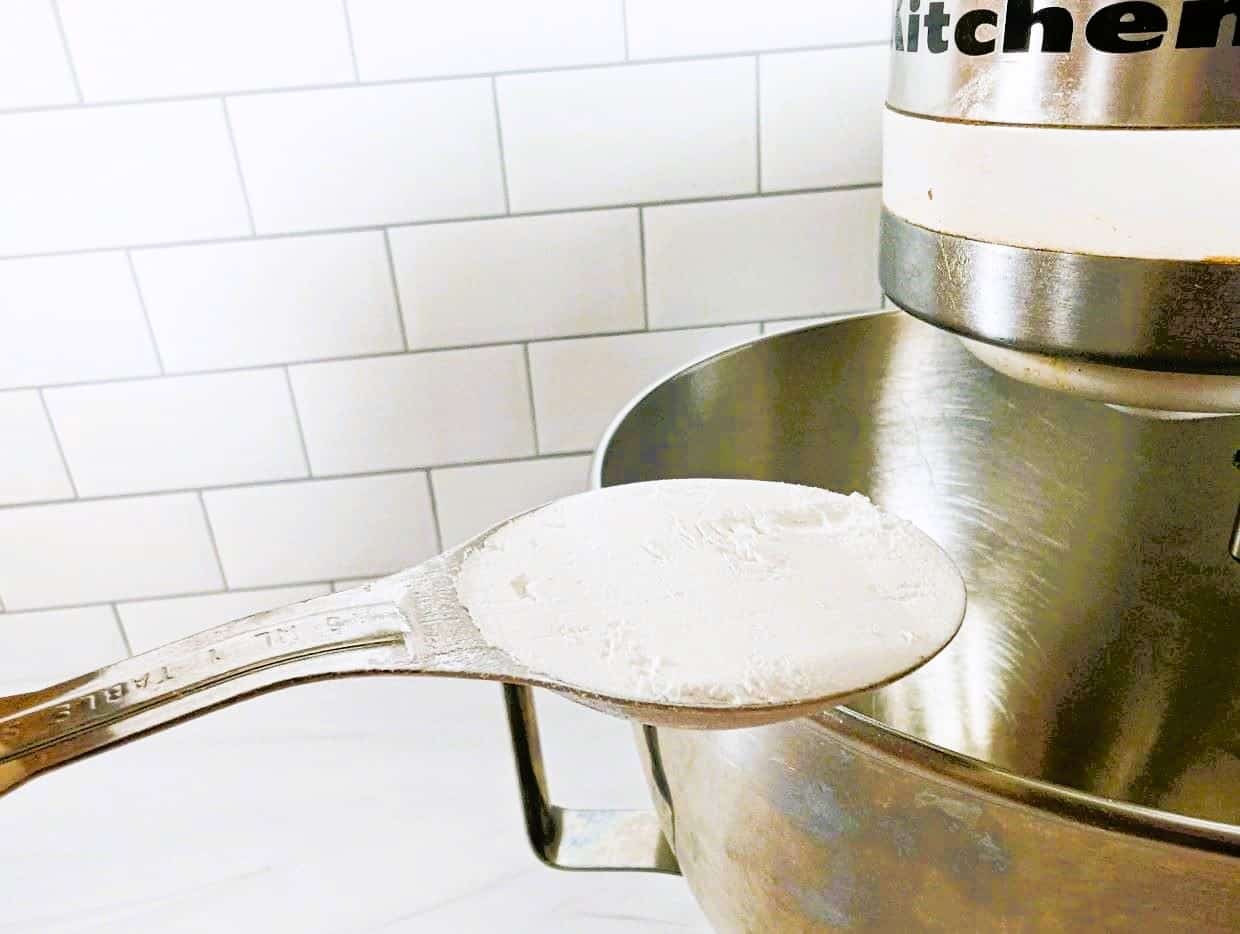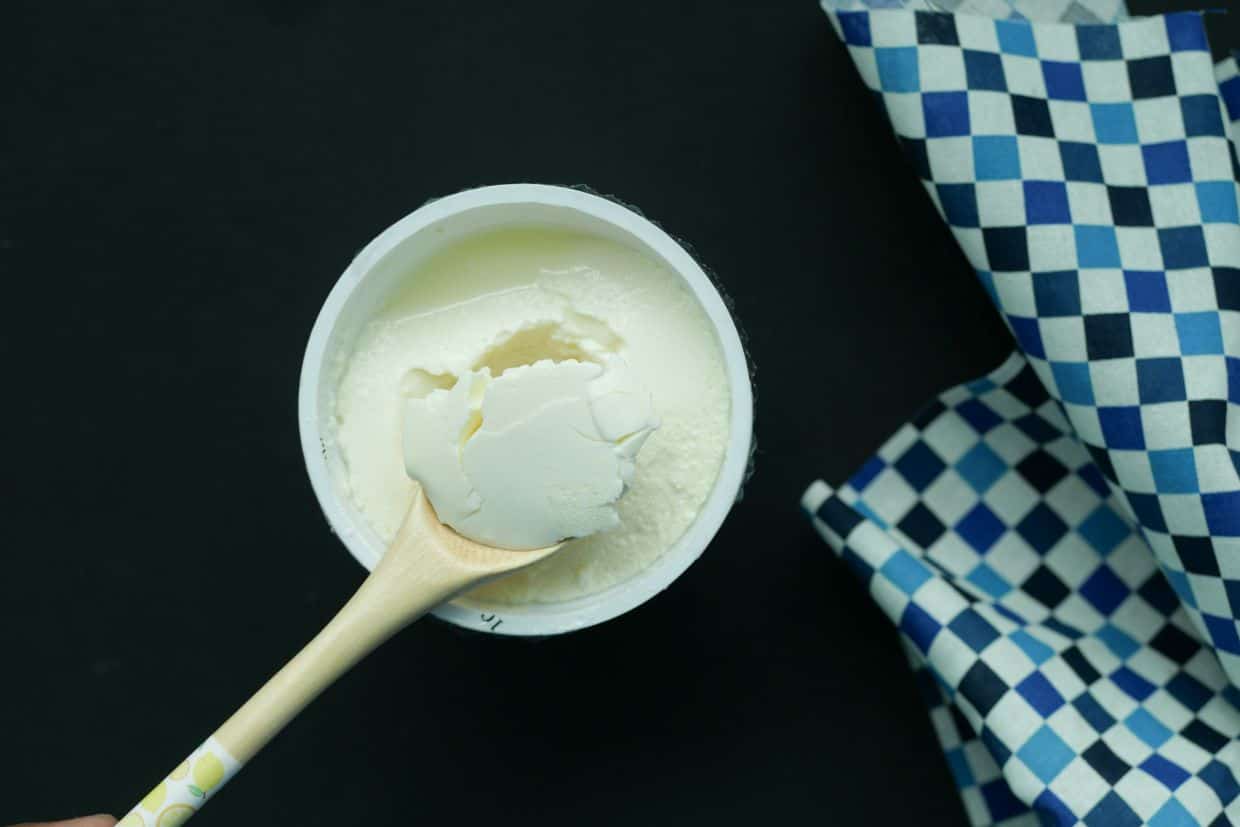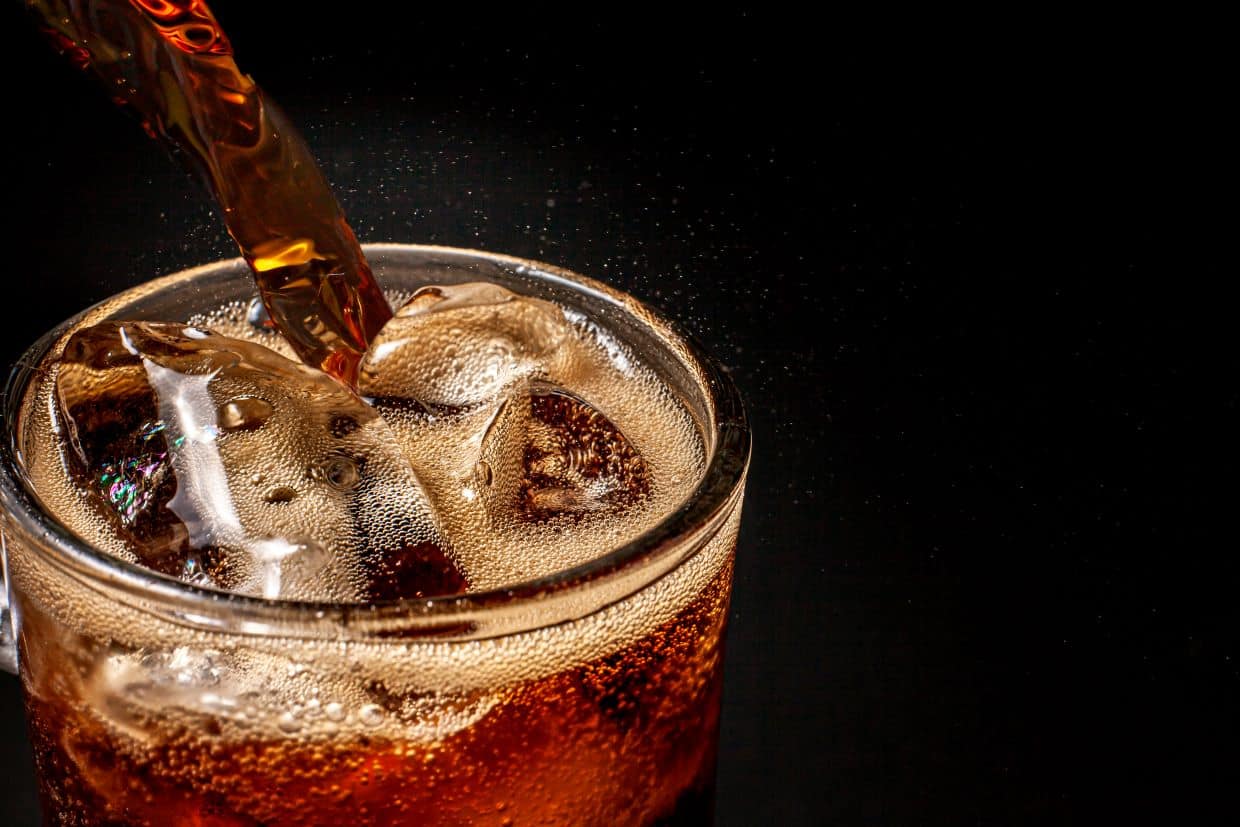Many recipes call for baking powder, but who bakes enough to use a whole can before it expires? Instead of giving up on a recipe or making an extra trip to the store, you can make your own. If you’ve ever needed baking powder, but realized yours was expired, keep reading.

Why baking powder—or baking powder substitutes are necessary
Here are a few reasons why you need it:
- Baking powder acts as a leavening agent—-it helps baked goods rise.
- It gives cookies, cakes and quick breads a fluffy, light and porous structure.
- Baking powder gives baked goods an airy, light texture.
Why expired baking powder doesn’t work
Inactive baking powder won’t work correctly in your recipes. Baked goods will end up dense and tough because they won’t rise. To test if your baking powder is still good, stir half a teaspoon into a cup of hot water. If it starts to fizz, it’s still good. If not, it is expired and needs to be thrown out.
Common baking powder substitutes
Baking powder usually contains cream of tartar, which is a dry acid that will produce carbon dioxide bubbles when added. It is usually called for in recipes that don’t have an acidic ingredient like buttermilk or molasses. Substitutes must contain an acid to create the same effect.
Homemade baking powder
Homemade baking powder has baking soda, cream of tartar, and cornstarch. One-quarter teaspoon of baking soda, half teaspoon of cream of tartar and one quarter teaspoon of cornstarch replaces 1 teaspoon of baking powder.
Cream of tartar and baking soda
Cream of tartar is the acid that is typically in baking powder, so if you combine it with baking soda, you are good to go. One quarter teaspoon of baking soda plus five-eighths teaspoon of cream of tartar replaces one teaspoon of baking powder.
“When I realize I used the last of my baking powder, I substituted it with one part baking soda plus two parts cream of tartar. You can use that one-for-one as a replacement for baking powder. It works for things like muffins and quick breads without changing the taste. Though it isn’t quite as effective as traditional baking powder, it works in a pinch.”
– Michelle Price, Honest and Truly
Baking soda and yogurt

Yogurt is slightly acidic, so that is where the acid comes from in this substitution. One-quarter teaspoon of baking soda plus half cup of yogurt replace 1 teaspoon of baking powder. Reduce the wet ingredients in your recipe by about half cup to maintain the right ratios.
Baking soda and vinegar
White vinegar has the most neutral flavor, but any type of vinegar can be used. It will still add a little flavor to your cake, muffins or other baked goods. 1 teaspoon of vinegar plus one quarter teaspoon of baking soda replaces 1 teaspoon of baking powder.
Baking soda and buttermilk
Buttermilk is acidic, so it can be combined with baking soda to substitute baking powder. One half cup buttermilk plus one quarter teaspoon baking soda replaces 1 teaspoon of baking powder. To maintain the correct consistency in your recipe, reduce the other liquids by one half cup.
Baking soda and sour milk
If your milk has started to go bad — it smells off but hasn’t curdled yet, it is starting to go through fermentation. It contains lactic acid, which will activate baking soda. Half a cup of sour milk plus one quarter teaspoon of baking soda replaces 1 teaspoon of baking powder. Reduce the other liquids in your recipe by one half cup to maintain the correct consistency.
Baking soda and lemon juice
Lemon juice will alter the flavor of your dish, so only use this if you don’t mind some lemon flavor or have no other options. 1 teaspoon of lemon juice plus one quarter teaspoon of baking soda replaces 1 teaspoon of baking powder.
Filled with appetizers, salads, sides, mains and desserts, Food Drink Life's cookbook will become your favorite!
- Easy and delicious recipes from a variety of top chefs and recipe developers.
- Bright, colorful pictures on every page.
- Printer-friendly recipes that you can download instantly to your device.
- Printable shopping list and a kitchen conversion sheet.
Baking soda and molasses
Molasses has enough acid to create carbon dioxide when combined with baking soda. One quarter cup of molasses plus one quarter teaspoon of baking soda replaces 1 teaspoon of baking powder. Molasses has a strong flavor, so only use it if you don’t mind changing the flavor of what you are making.
Self-rising flour
Self-rising flour is made from all-purpose flour, baking powder and salt, so it has everything needed to make baked goods, like cookies, rise. Replace the regular flour in your recipe with self-rising flour without adding baking powder or baking soda.
Whipped egg whites
Whipping egg whites creates air bubbles which help increase the volume and lightness of baked goods. This method doesn’t add much volume, so it is best when making pancakes or waffles because they don’t need much height. One egg white replaces 1 teaspoon of baking powder.
Club soda
Club soda adds bubbles, which is what baking powder creates. It doesn’t have much sodium bicarbonate, so it works best in baked goods that don’t need much added volume like pancakes or waffles. For best results, replace all of the liquid in your recipe with club soda — unless the other liquids added flavor.
Soda pop

Soda pop is very sweet, so this one works best in cakes or cupcakes. They won’t rise as much as normal, though. Sprite and 7-Up are best in yellow cakes, and Coke and Pepsi are best in chocolate cakes. Just like with club soda, replace all of the liquid in your recipe with the soda pop. Because soda pop is so sweet, you may want to add less sugar than your recipe calls for.
Final thoughts
When using a substitute, it’s important to remember that your recipe may not turn out exactly like the original. Baking powder substitutes will help your baked goods rise, but not as well as baking powder itself. Try different ones to see which substitute works best for you.
Heidi is a Certified Elementary School Teacher in the Inland Northwest and has been teaching for 17 years. She is also a vintage recipe blogger at RealLifeofLulu.com, where she focuses on recipes that are at least 50 years old, many from her grandparents’ kitchens. When she isn’t teaching or baking, she loves spending time with her husband and three kids.
